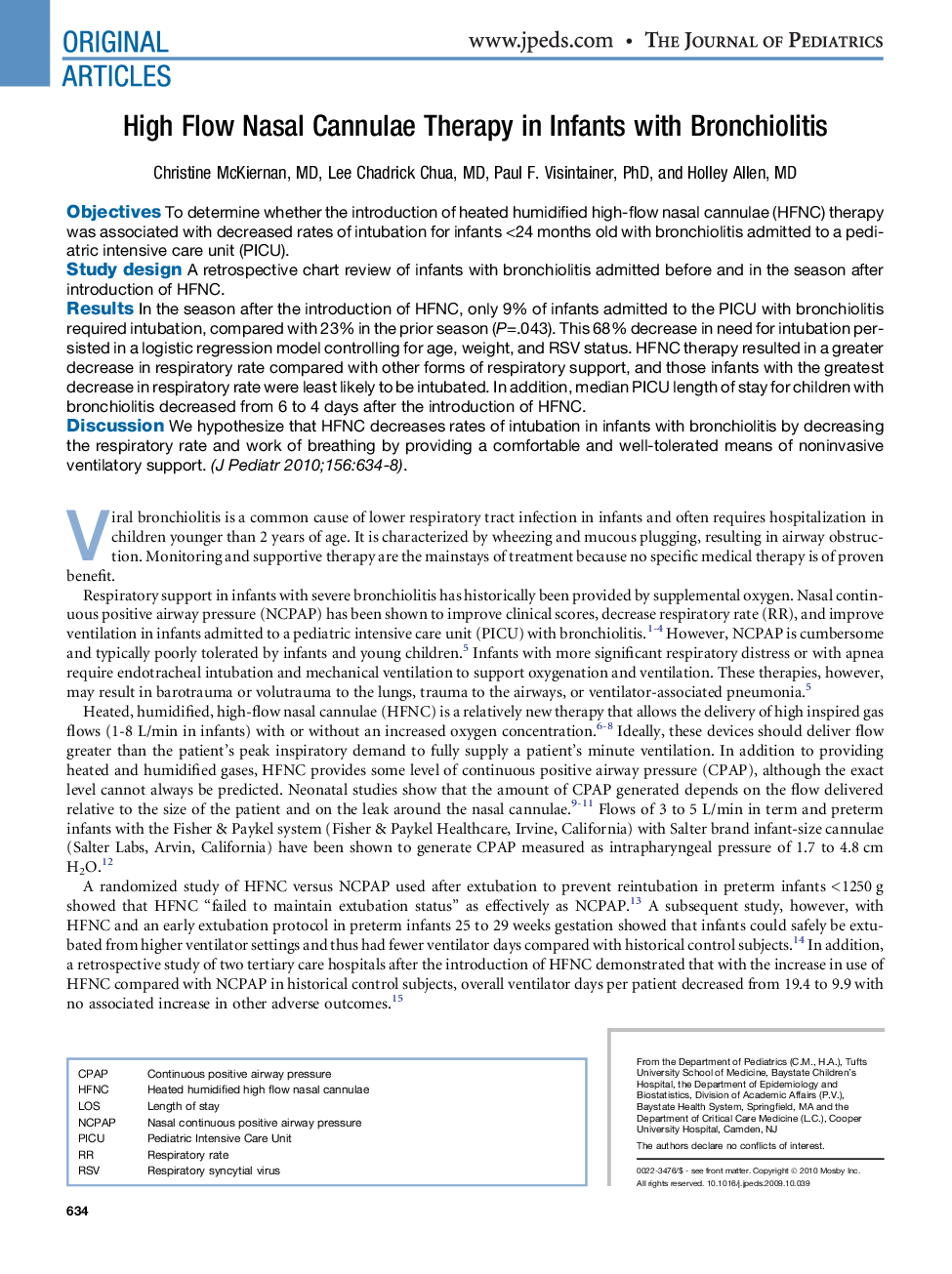| کد مقاله | کد نشریه | سال انتشار | مقاله انگلیسی | نسخه تمام متن |
|---|---|---|---|---|
| 4166515 | 1607508 | 2010 | 5 صفحه PDF | دانلود رایگان |

ObjectivesTo determine whether the introduction of heated humidified high-flow nasal cannulae (HFNC) therapy was associated with decreased rates of intubation for infants <24 months old with bronchiolitis admitted to a pediatric intensive care unit (PICU).Study designA retrospective chart review of infants with bronchiolitis admitted before and in the season after introduction of HFNC.ResultsIn the season after the introduction of HFNC, only 9% of infants admitted to the PICU with bronchiolitis required intubation, compared with 23% in the prior season (P=.043). This 68% decrease in need for intubation persisted in a logistic regression model controlling for age, weight, and RSV status. HFNC therapy resulted in a greater decrease in respiratory rate compared with other forms of respiratory support, and those infants with the greatest decrease in respiratory rate were least likely to be intubated. In addition, median PICU length of stay for children with bronchiolitis decreased from 6 to 4 days after the introduction of HFNC.DiscussionWe hypothesize that HFNC decreases rates of intubation in infants with bronchiolitis by decreasing the respiratory rate and work of breathing by providing a comfortable and well-tolerated means of noninvasive ventilatory support.
Journal: The Journal of Pediatrics - Volume 156, Issue 4, April 2010, Pages 634–638